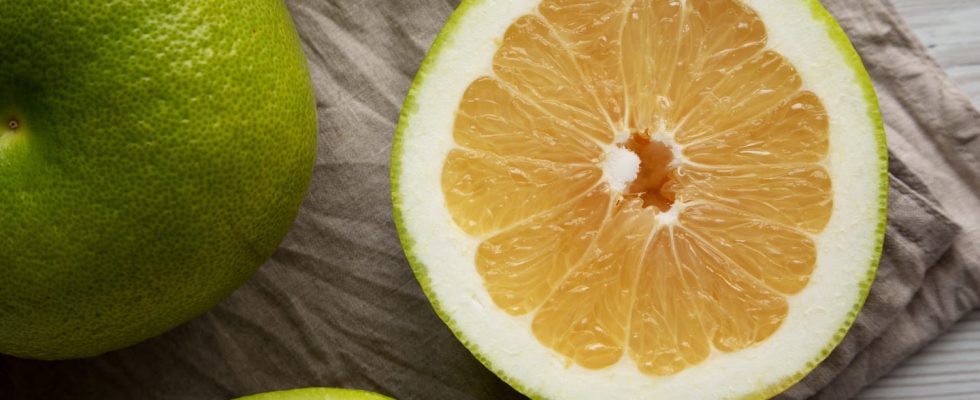Fatigue often intensifies in November with the time change, shorter days, longer nights… Here are the fruits richest in vitamin C to favor to reboost the body.
Vitamin C, also called ascorbic acid, intervenes in many processes of the body. It helps to fight against temporary fatigue, oxidative stress (which promotes aging of cells) And facilitates iron absorption non-heme (present in foods of plant origin). In humans, there is neither synthesis nor storage of vitamin C: food therefore constitutes the only natural source contribution. We know that it is present in fruits but in which find the most vitamin C ?
1. Guava
Guava is the fruit richest in vitamin C since it contains 228mg per 100 g. This fruit is also rich in antioxidants and potassium. Its season begins in autumn, in November. The best guavas are eaten December to February. When choosing it, choose a guava that is smooth, tender but not too soft (a bit like a mango). The yellower it is, the sweeter it is. It is eaten raw (after being peeled and seeded) or cooked.
2. Blackcurrant
Blackcurrant is a fruit also very rich in vitamin C since it concentrates it 181 mg per 100 g. These small purplish black berries contain polyphenols giving it antioxidant benefits. It’s between July and September that blackcurrant is the best.
3. Kiwi
Kiwi is an excellent winter fruit. It is rich in antioxidants including the vitamin C it contains in the amount of 81.90 mg per 100 g. It also has positive effects on digestion and anti-inflammatory properties. To benefit from its benefits, you must eat it during its season that is to say January to March.
4. Papaya
This tropical fruit available from October to December is perfect for stocking up on vitamin C between fall and winter. It contains 65.3 mg per 100 g of fruit. Papaya also contains carotenoids which contribute to improving vascular function and vitamin B9 (particularly interesting for women who are planning to become pregnant or are pregnant). Finally, papaya is an interesting source of potassium (200mg/100g).
5. Chinese grapefruit
FromOctober to February, you can find Chinese grapefruit on your stalls. He easy to eat after gently removing its green/yellow bark by hand (it is not not juicy like pink grapefruit therefore easier to eat everywhere). Chinese grapefruit has the advantage of being rich in vitamin C up to 61 mg per 100 g of fruit.
6. Clementine
Of November to February, clementine is easily enjoyed in the morning for breakfast, as a snack at 10 a.m. or as a snack. It has the advantage of containing 49 mg of vitamin C in 100g of fruit (knowing that a clementine weighs around 70g). Clementine also contains vitamin B9.
7. Orange
The orange season goes from December to April. As it is drunk in juice, orange is easy to consume but not as rich in vitamin C as you might think. It contains 47.50 mg per 100 g of fruit. It has the advantage of being rich in folic acid and flavonoids which gives it antioxidant and anti-inflammatory properties. In the same citrus family, lemon contains 45 mg of vitamin C per 100 g.
8. Pineapple
Even if it is found almost all year round on French stalls, the high season short pineapple December to March. And it is a fruit not to be forgotten for its richness in vitamin C. It contains 46 mg per 100g almost as much as orange. Pineapple is also a fruit rich in vitamin B9 and potassium.
- Agency for research and information in Fruits and Vegetables (Aprifel)
- The nutritional composition table of Ciqual, Anses
